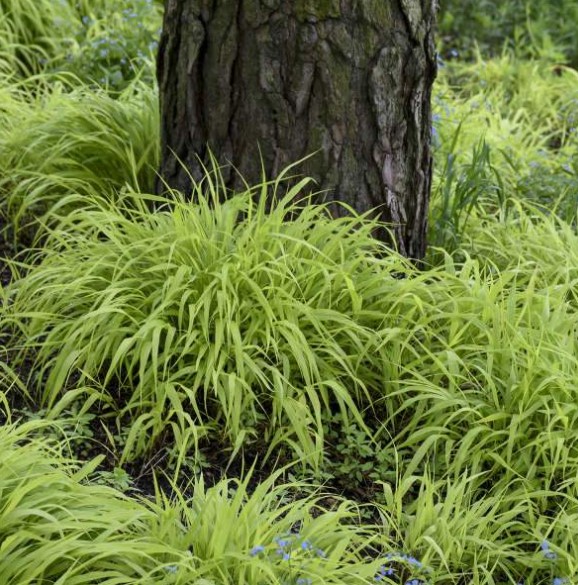In the enchanting wet woodlands of Japan’s Mt. Hakone, a botanical gem known as Hakone grass, or Hakonechloa macra, has captured the hearts of gardeners worldwide. Also referred to as Japanese forest grass, this verdant beauty is celebrated for its striking 10-inch-long, lance-shaped foliage, bearing a resemblance to delicate bamboo shoots. A poetic observer might even envision the drooping fronds as a cascading waterfall. While many Hakone grass cultivars boast vibrant green leaves, some, like H. macra Albostriata and H. macra Alboaurea, showcase variegated splendor with white or yellow stripes, adding a delightful tapestry of texture to any landscape.

Thriving in USDA Hardiness Zones 4 to 9, Hakone grass exhibits its adaptability, although certain cultivars may not withstand the frigid temperatures of Zone 4 or the sweltering heat of Zones 8 and 9. What truly distinguishes these ornamental grasses is their remarkable shade tolerance, a virtue that can alleviate the challenges of decorating dark or shadowy areas in your garden. Despite their spreading nature, Hakone grasses are not invasive, endearing them further to garden enthusiasts.
The hallmark of Japanese forest grass lies in its luxuriant, 3-foot-wide clumps that take on a soft burgundy or pink blush in the fall. As winter approaches, these clumps gently fade to brown and gracefully wither away. This seasonal transformation infuses your garden with a captivating visual drama throughout the year, enhanced by the subtle swaying of the grass during breezy days, captivating onlookers with its ever-changing charm. This adaptability is a boon when designing your garden, as Hakone grass fits seamlessly as an accent plant, a gap filler, and an enhancer of natural lushness along landscape borders.
Adding to its allure, these deciduous grasses grace the garden with delicate greenish-yellow blooms during the summer months. Beyond their aesthetic appeal, Hakone grass serves a functional role in the garden. They are averse to the nibbling tendencies of rabbits and the foraging habits of deer, making them an ideal choice for gardens often visited by wildlife. Additionally, they exhibit resistance to the growth-inhibiting chemicals produced by black walnut trees, a feature highly valued by gardeners.
Hakone grass showcases its adaptability in various light conditions, radiating a serene green in deep shade and transitioning to a sunny yellow in dappled sunlight. However, in full sun exposure, they may lose their luster and experience leaf scorch in dry climates. These grasses are also low-maintenance, requiring minimal pruning and pest control, making them an easy choice for gardeners of all levels.
The weeping, cascading texture and chameleon-like foliage of Hakone grass make it a versatile addition to any garden. When planted in proximity, these cascading greens blend and intermingle, forming a lush ground cover. The variegated varieties, like H. macra ‘All Gold’ with its golden-yellow hues, can illuminate dimly lit areas, creating pockets of radiance. They also shine as understory vegetation in woodland gardens, harmonizing with the natural environment.
Notably, the diminutive stature of Japanese forest grass makes it a superb candidate for container gardening. When provided with well-drained, moist soil, these tufts flourish, spread, and gracefully spill over the edges of pots, elevating the visual appeal of your garden containers. Combining Hakone grass with thriller and filler plants creates visually stunning garden containers. During cooler temperatures, it’s advisable to insulate the plant by spreading mulch or providing a larger pot as protection.
For those seeking to make a bold statement in their landscape, Hakone grass can be the focal point. Plant it strategically as an accent piece along garden edges, pathways, or among rocks. Interplant it with other shade-tolerant species or position it as a backdrop to complement plants with purple or blue foliage, such as lilac, mugo pine, and coral bells. The petite clumps of Hakone grass can also be beautifully juxtaposed with larger-leaved Hosta plants.
